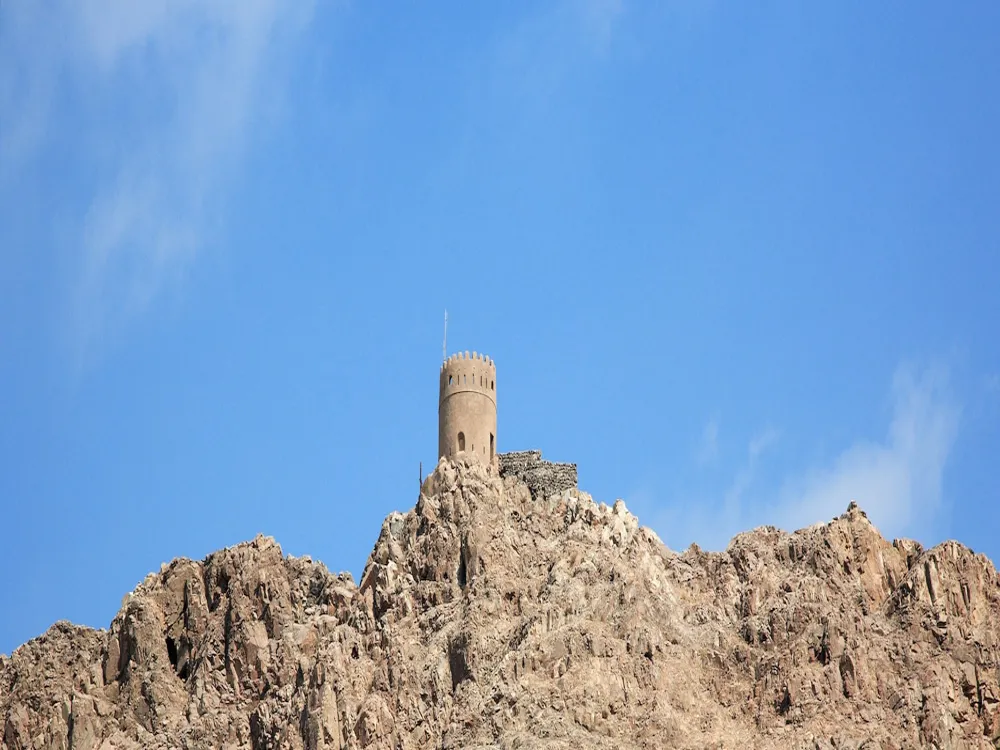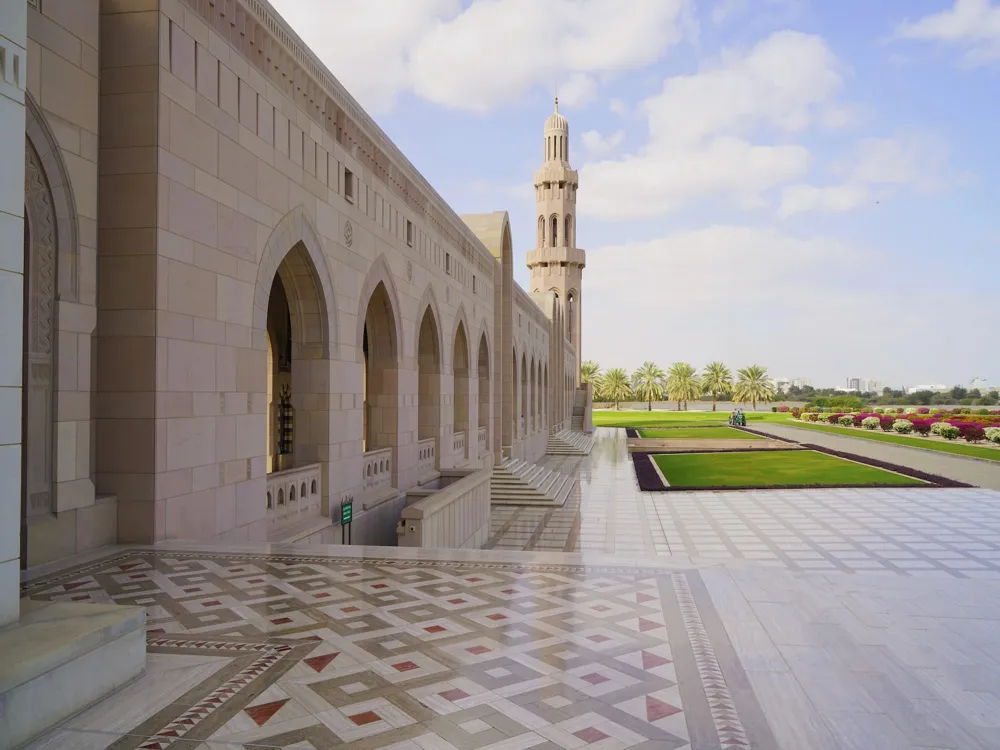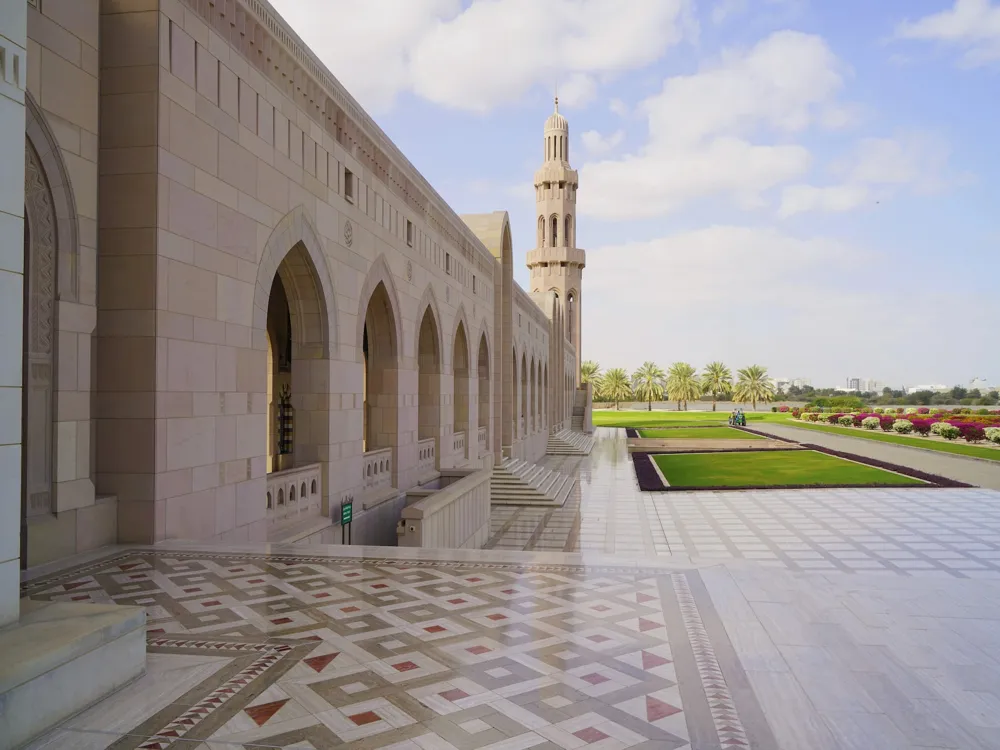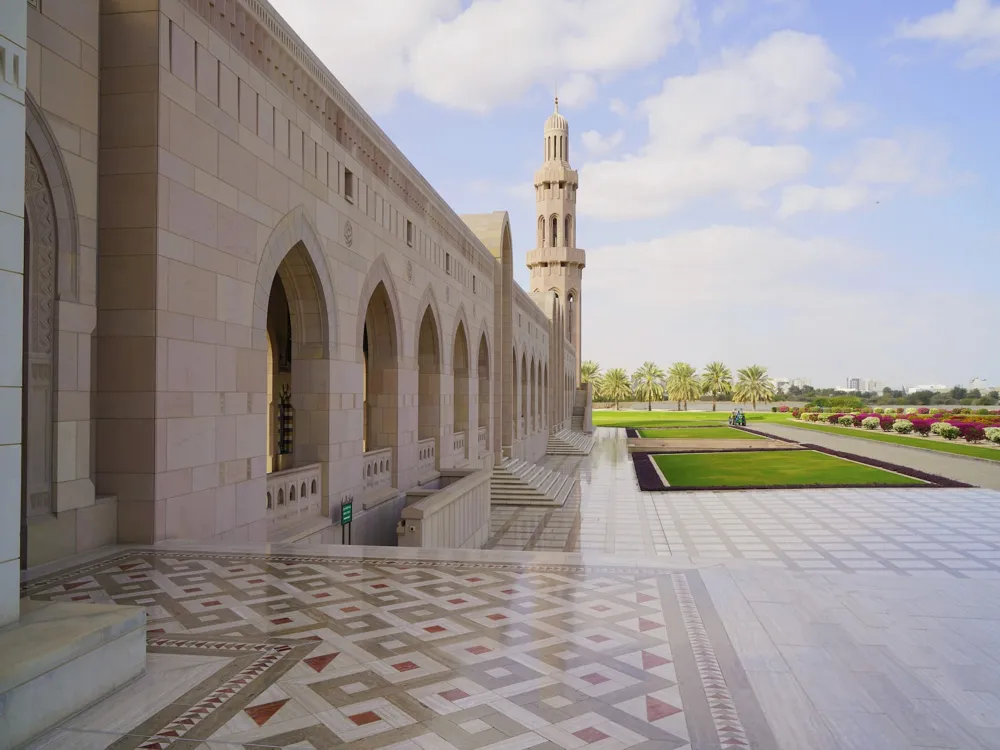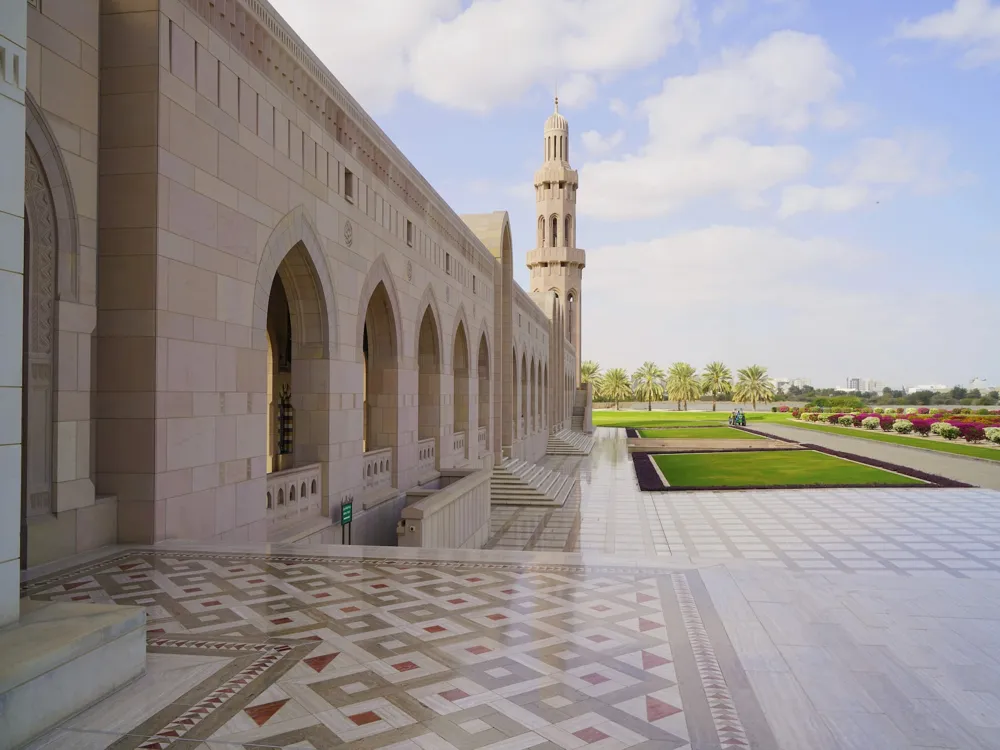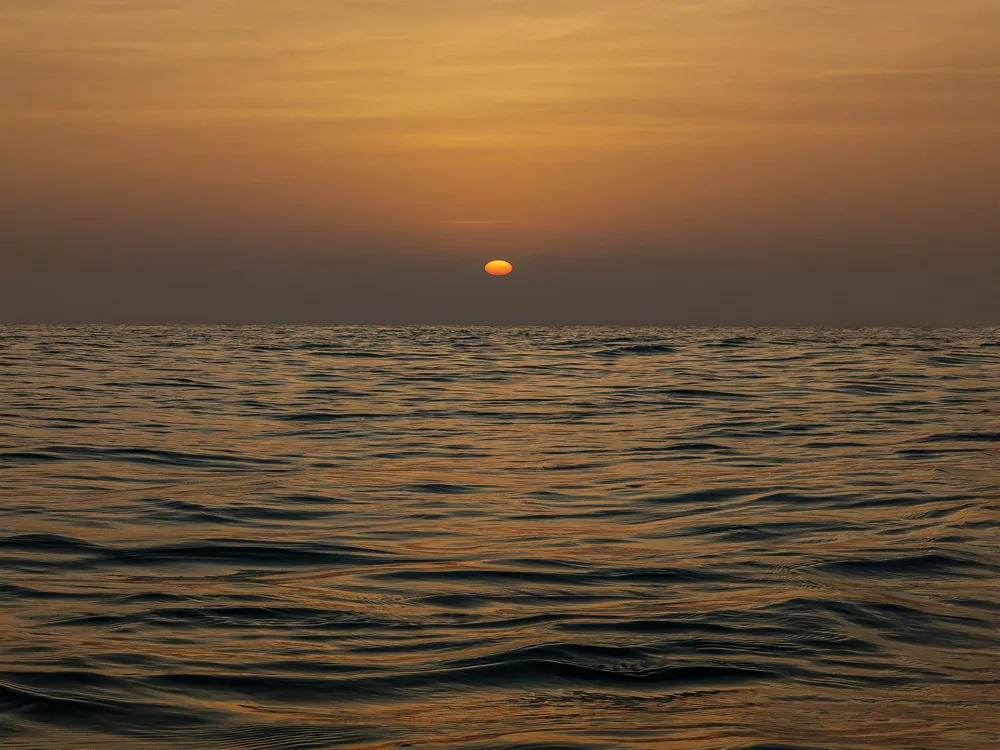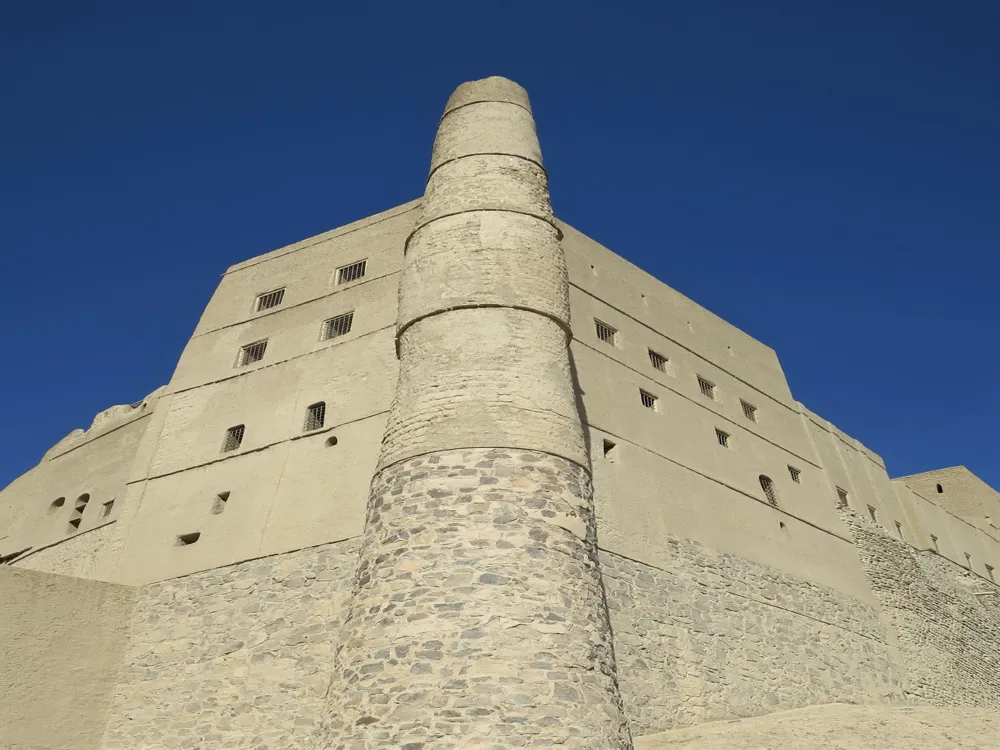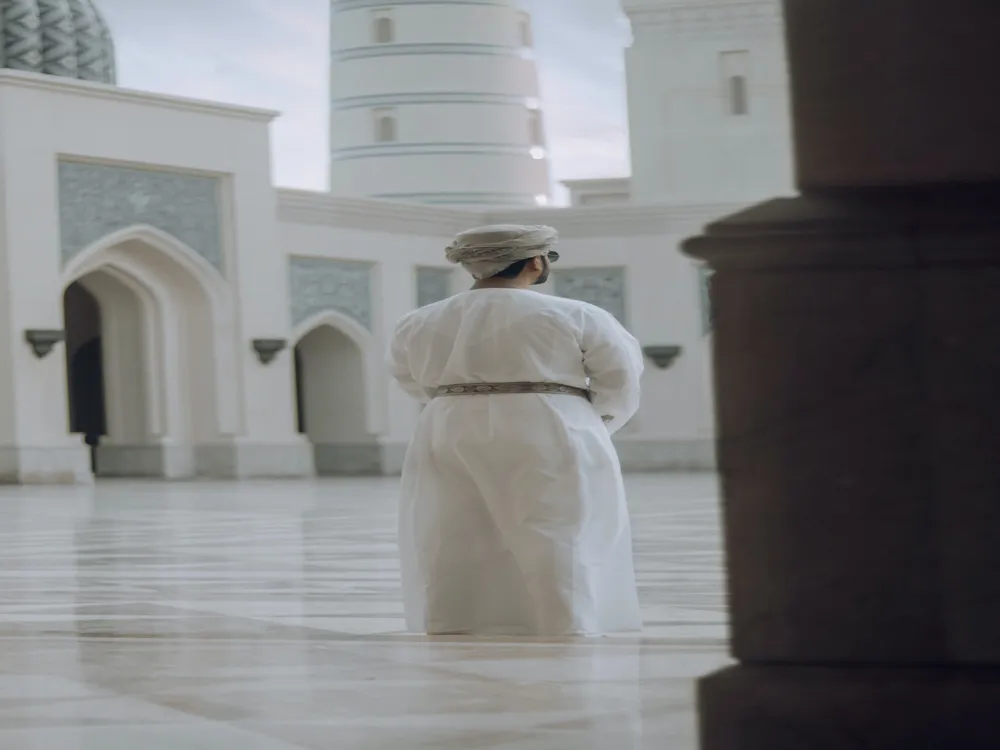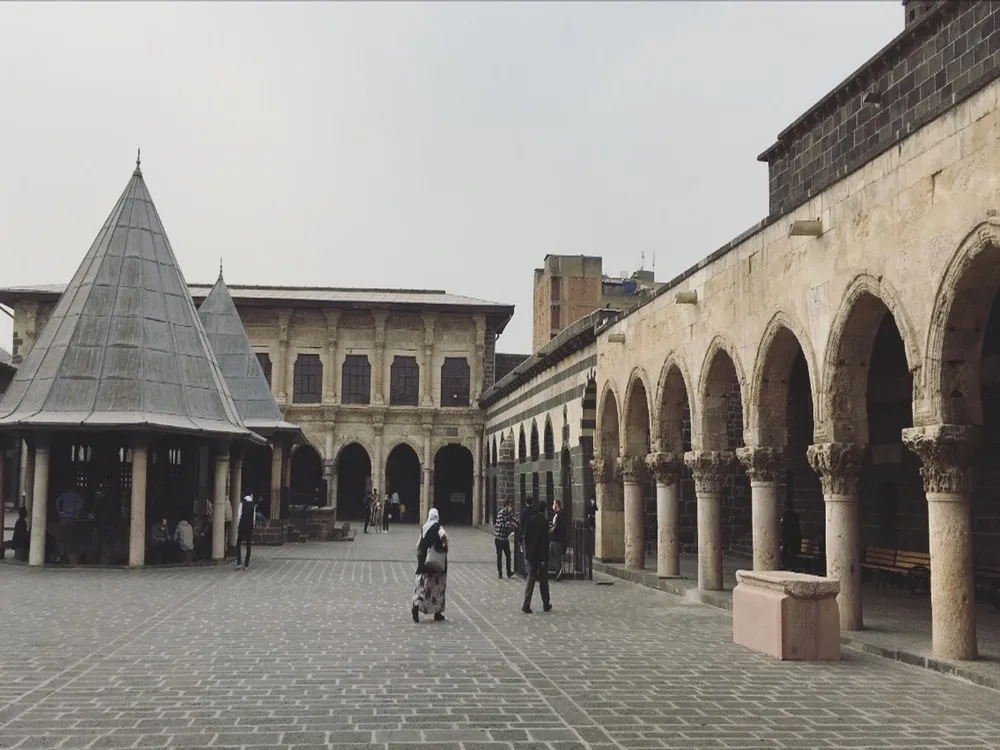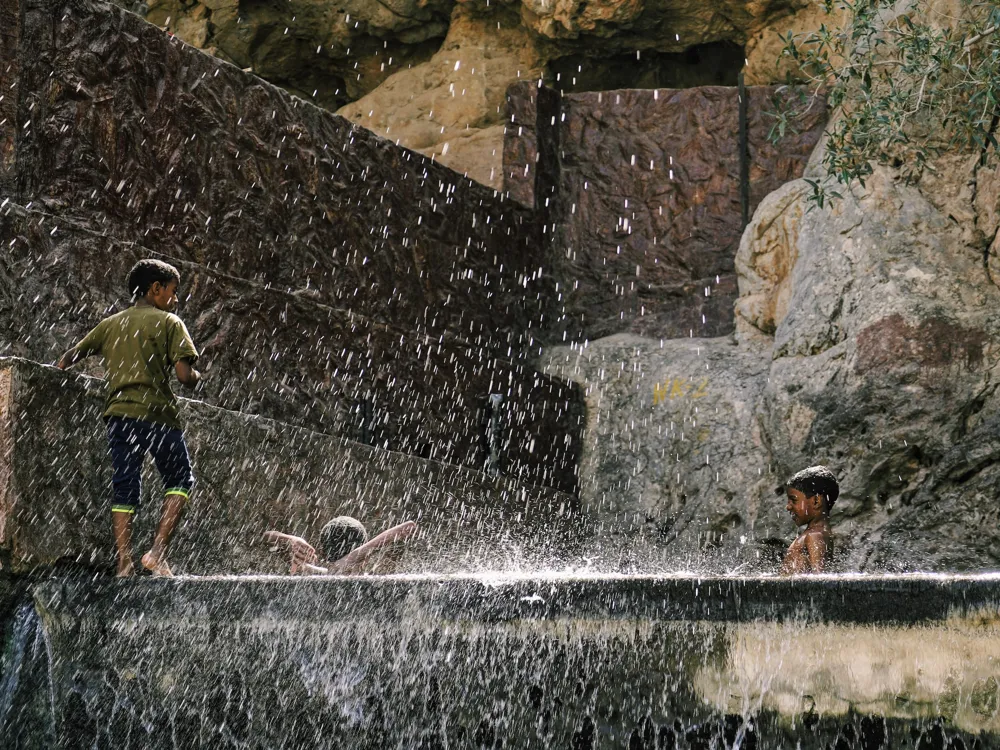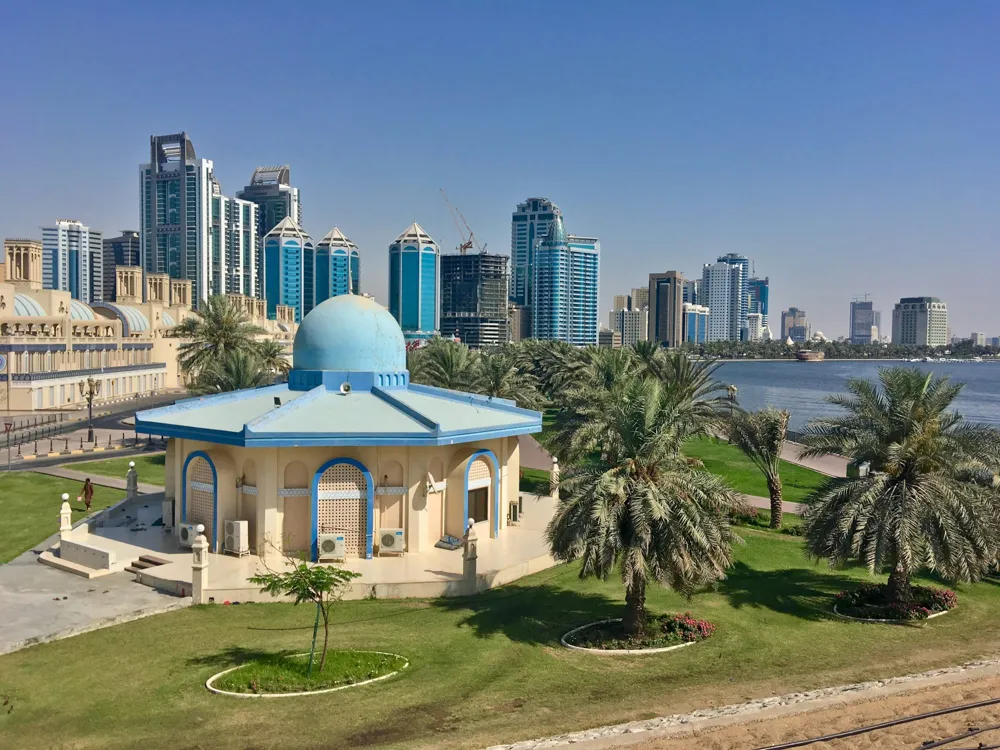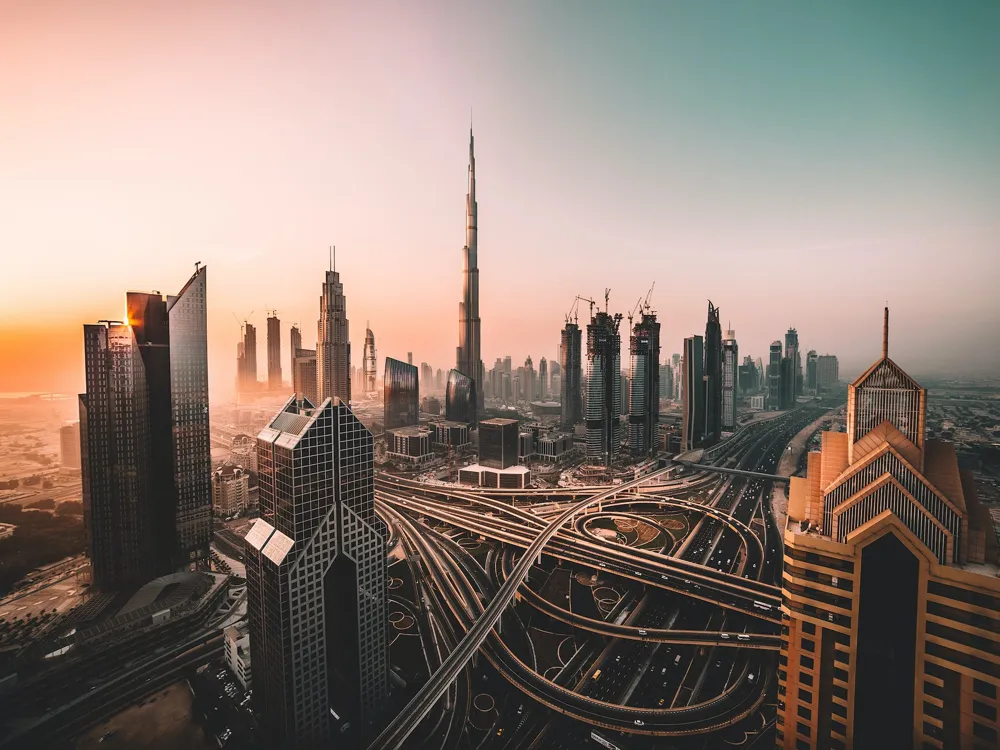Al Alam Palace, a jewel in the heart of Muscat, Oman, stands as a symbol of the nation's rich history and cultural heritage. This magnificent palace, meaning 'The Flag' in Arabic, has been the ceremonial palace of the Sultan of Oman for over 200 years. Despite its historical significance, the palace is relatively modern, with its current form dating back to the 1970s. It serves as a stunning example of contemporary Islamic architecture, blending modern design elements with traditional Omani and Islamic styles. The palace's location is as significant as its architecture, situated between the Al Jalali and Al Mirani forts along the coast of Muscat. These forts, built by the Portuguese in the 16th century, provide a historical backdrop that contrasts beautifully with the palace’s modern aesthetics. The palace is not open to the public, but visitors can admire its grandeur from the outside. The front façade, characterized by its gold and blue pillars, is a popular backdrop for tourists and photographers. The surrounding gardens and water fountains add to the serene and majestic ambiance of the location. Al Alam Palace's role in Oman's history is pivotal. It has been a witness to significant events and transitions in the country, from the era of Sultan Said bin Taimur to the current reign of Sultan Haitham bin Tariq. The palace has hosted numerous dignitaries and world leaders, underlining Oman's growing importance on the world stage. Its presence, therefore, is not just as a residence of royalty but as a beacon of Omani pride and progress. The palace complex is also a center for cultural events, national celebrations, and official functions, reflecting its ongoing role in the social and political life of Oman. The annual National Day celebrations see the palace come alive with festivities, embodying the spirit of Omani culture and heritage. Despite its restricted access, Al Alam Palace remains an integral part of the Omani national identity, embodying the country's past, present, and future. The architecture of Al Alam Palace is a testament to the unique blend of traditional Omani and contemporary design elements, making it one of the most visually striking landmarks in the Middle East. Designed by a renowned British architect in the 1970s, the palace reflects a modern interpretation of Islamic and Omani architectural styles. It is a remarkable example of how traditional motifs and modern aesthetics can coexist harmoniously. The façade of Al Alam Palace is its most striking feature, characterized by its vibrant colors and geometric patterns. The blue and gold columns that adorn the front are symbolic, representing the wealth and maritime history of Oman. The use of blue is particularly significant as it mirrors the surrounding seas and sky. These columns support a large, flat roof, a modern element that contrasts with the more traditional aspects of the design. The interior of the palace, though not open to the public, is said to be just as impressive as its exterior. It reportedly features elaborate Islamic art, luxurious furnishings, and advanced technological fittings. The use of intricate latticework, vibrant mosaics, and detailed carvings throughout the palace demonstrates the skill and craftsmanship of Omani artisans. The palace grounds are equally impressive, with beautifully landscaped gardens and water features that create a tranquil oasis in the heart of the city. The integration of the palace within its natural surroundings is a key aspect of its design, emphasizing a harmonious balance between built and natural environments. This relationship is reflective of Omani culture, which places great importance on the respect and appreciation of nature. In summary, the architecture of Al Alam Palace is not just about aesthetic beauty; it embodies the cultural, historical, and social ethos of Oman. It represents a bridge between the past and the present, showcasing how traditional Omani architecture can adapt and thrive in a modern context. This architectural marvel continues to inspire architects and designers globally, symbolizing the progressive spirit of Oman while staying rooted in its rich heritage. The best time to visit Al Alam Palace is during the cooler months from October to April. The weather is more pleasant, making outdoor exploration more comfortable. Early mornings or late afternoons are ideal for photography, as the lighting enhances the palace's colors. While photography of the palace exterior is allowed, visitors should respect local customs and avoid photographing military or security personnel. It's advisable to use cameras rather than smartphones for better-quality photos of the architecture. Visitors should dress modestly in Omani culture. Shoulders and knees should be covered, and loose-fitting, light-colored clothing is recommended due to the heat. Combine your visit to Al Alam Palace with nearby attractions such as the Muscat National Museum, the vibrant Mutrah Souq, and the scenic Mutrah Corniche. These locations offer a deeper insight into Omani culture and history. The area around Al Alam Palace is well-equipped with facilities like public restrooms and cafes. The site is wheelchair accessible, ensuring a comfortable visit for all tourists. Reaching Al Alam Palace is convenient, as it's located in the heart of Muscat and is easily accessible by various means of transportation. Visitors can opt for taxis, which are readily available throughout the city. For those preferring public transport, buses serve as the route to the palace, offering an affordable and authentic travel experience. For tourists staying in central Muscat, a pleasant walk through the city's picturesque streets can also lead them to the palace. Additionally, for visitors driving their vehicles, ample parking is available near the palace. Read More:Overview of Al Alam Palace in Muscat
Architecture of Al Alam Palace
Tips When Visiting Al Alam Palace
Best Time to Visit
Photography Guidelines
Dress Code
Nearby Attractions
Accessibility and Facilities
How To Reach Al Alam Palace
Al Alam Palace
Muscat
₹ 49,000 onwards
View muscat Packages
Weather :
Tags : Forts & Palaces
Timings : Open 24 hours on all days
Time Required : 2 hours
Entry Fee : Free (Entry inside residence is restricted)
Planning a Trip? Ask Your Question
Also Refered As:
Sultan's Palace Muscat
Muscat Travel Packages
View All Packages For Muscat
Top Hotel Collections for Muscat

Private Pool

Luxury Hotels

5-Star Hotels

Pet Friendly
Top Hotels Near Muscat
Other Top Ranking Places In Muscat
View All Places To Visit In muscat
View muscat Packages
Weather :
Tags : Forts & Palaces
Timings : Open 24 hours on all days
Time Required : 2 hours
Entry Fee : Free (Entry inside residence is restricted)
Planning a Trip? Ask Your Question
Also Refered As:
Sultan's Palace Muscat
Muscat Travel Packages
View All Packages For Muscat
Top Hotel Collections for Muscat

Private Pool

Luxury Hotels

5-Star Hotels

Pet Friendly







